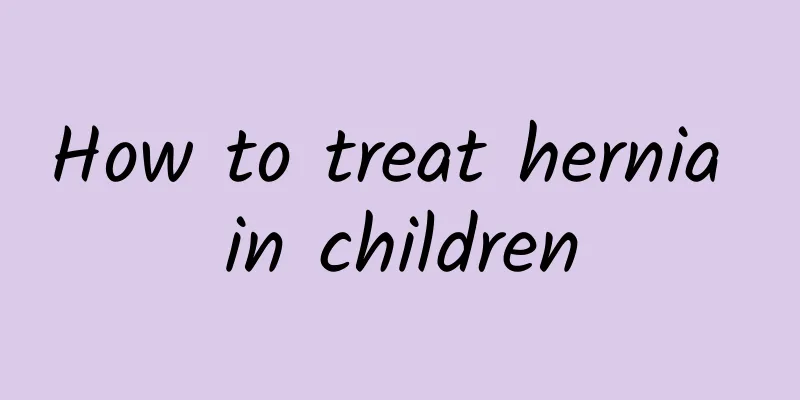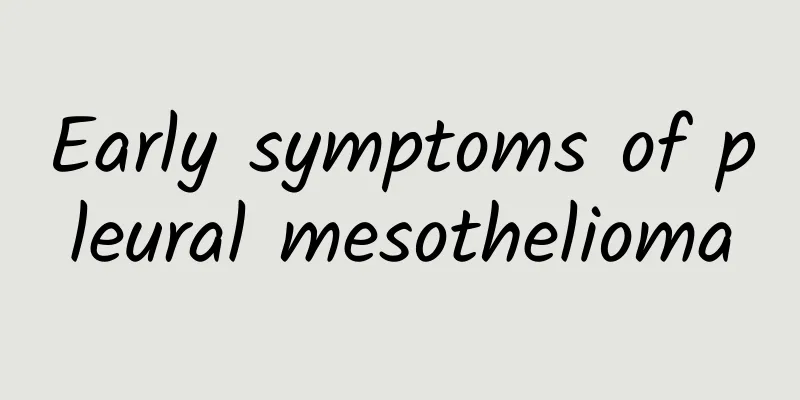How to treat hernia in children

|
Hernia is a disease that infants or younger children are likely to get, and it is more common in newborns with weaker constitutions. Generally speaking, if the hernia is not very serious, it will disappear naturally as the child grows up. But if the hernia is more serious, it needs to be treated with formal treatment methods. So, how should hernias in children be treated? Causes The root cause of inguinal hernia in children is that the processus vaginalis fails to close in time. The processus vaginalis is formed by the descent of the round ligament of the testis or uterus and usually closes within one year after birth. The processus vaginalis of newborns and infants under six months old is often not completely closed, but not all cases of non-closure of the processus vaginalis do not result in a hernia. If the infant's abdominal wall is not strong enough, such as premature infants and low-birth-weight infants, inguinal hernia is more likely to occur. Other conditions such as excessive crying, constipation, coughing, etc. that increase intra-abdominal pressure can also promote the formation of hernia. The right testicle generally descends later than the left, and the processus vaginalis takes longer to close. Therefore, right-side inguinal hernia is more common than left-side inguinal hernia, and unilateral inguinal hernia is more common than bilateral inguinal hernia. Umbilical hernia in children occurs because the umbilical ring does not close. The umbilical ring is formed during the embryonic period and continues to shrink as the fetus grows. The diameter of the umbilical ring of a normal newborn is about 1 cm. Under normal circumstances, the umbilical ring continues to shrink after birth until it finally closes. After the baby's umbilical cord falls off, the umbilical scar is a congenital weak spot. At the same time, during infancy, the anterior and posterior sheaths of the rectus abdominis muscles on both sides do not close at the navel, leaving a defect, which provides conditions for the occurrence of umbilical hernia. Various factors that increase intra-abdominal pressure, such as crying, constipation, diarrhea, coughing, etc., can all contribute to the occurrence of umbilical hernia in children. Clinical manifestations Characteristic clinical manifestations: a lump that appears and disappears or changes size in the groin area or umbilicus. The lump appears or grows larger when the intra-abdominal pressure increases when the child stands or cries, while the lump disappears on its own or by pressing with the hands in the early stages of lying down or after the child stops crying. In the early stages, children usually have no significant discomfort except for the characteristic mass. Parents often bring their children to the hospital because they find a small mass in the groin, asymmetry of the scrotum, or a mass near the navel. As age increases, the hernia sac will continue to grow and may become incarcerated and strangulated, and may even cause testicular or ovarian infarction and atrophy, so timely treatment is necessary. examine The typical sign is a mass of varying size in the groin area or umbilicus. In the early stages, it may disappear when the patient lies flat, but reappear after standing up or crying. B-ultrasound examination can be used as an auxiliary diagnostic measure. diagnosis Typical pediatric inguinal hernia or umbilical hernia can be diagnosed through detailed medical history and careful physical examination, but for children with atypical inguinal hernia symptoms, B-ultrasound and other examinations are required to assist in the diagnosis, and also to help differentiate from common pediatric diseases such as hydrocele and cryptorchidism. treat 1. Conservative treatment Inguinal hernia and umbilical hernia in children under 1 year old may heal on their own, so conservative treatment can be adopted. For larger or frequently prolapsed hernias, a hernia belt can be used for local compression, the purpose of which is to prevent the hernia contents from protruding. At the same time, children should try to reduce crying, coughing, constipation and other situations that increase intra-abdominal pressure. If a child is found crying and crying non-stop and the hernia cannot be retracted, it indicates that hernia incarceration may have occurred and the child should be sent to the emergency room immediately. 2. Surgery It is generally believed that inguinal hernia in children over 1 year old cannot heal on their own and should be treated surgically. However, age is not an absolute factor. It also needs to be considered in combination with the child's own situation. For example, if the child is less than one year old but has a large inguinal hernia or recurrent incarceration, the risk of conservative treatment increases and surgical treatment should be performed in a timely manner. If the child is over one year old but has a weak constitution and the hernia is not large, surgery can be performed at a slightly older age to reduce the risks of anesthesia and surgery. High ligation of the hernia sac is the main method for treating inguinal hernia in children. The operation is minor and is generally safe and reliable. |
>>: What to do if a child swallows a glass bead
Recommend
The harm of drinking Panax notoginseng flower soaked in water
As a precious Chinese herbal medicine, Panax noto...
Dark complexion? 6 complexions predict diseases, TCM teaches you how to identify them
Traditional Chinese medicine emphasizes observati...
Anal pain during bowel movements
Defecation is a normal metabolic activity of the ...
The difference between colon hydrotherapy and enema
Colon hydrotherapy and enema are generally used t...
What are the symptoms of chronic vaginitis?
The symptoms of chronic vaginitis are relatively ...
What are the symptoms of congenital kidney deficiency and what is the cause of congenital kidney deficiency?
Kidney deficiency is a common symptom in men. Mos...
Tonsillitis and fever in children
Whether adults or children, when they have a cold...
Facial bone asymmetry
The human face follows a golden ratio. Many good-...
I had diarrhea after taking Chinese medicine for dehumidification
Dehumidifying the body is something everyone shou...
What are the benefits of eating black garlic
Black garlic is a kind of garlic. Like garlic, it...
If the fallopian tube is blocked, exercise more
If the fallopian tubes are obstructed, it means t...
What are the effects and functions of cicada shells
We are all familiar with cicadas in summer. Their...
Treatments for psoriasis
There are many common diseases in life. When it c...
What are the do’s and don’ts for health preservation during the twelve hours in the Yellow Emperor’s Classic of Internal Medicine?
Nowadays, people pay great attention to health pr...
Which is better, decoction or Chinese patent medicine?
my country's traditional Chinese medicine cul...









